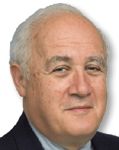Article
Clinicians urged to adopt new model of chronic pain
Baltimore--Scientific thinking about pain in general and chronic pain in particular has changed drastically in the last 50 years. Providers who treat chronic pain syndrome, such as chronic prostatitis/chronic pelvic pain syndrome (CP/CPPS), need to discard the old models if they are going to help patients.

That was the message John D. Loeser, MD, gave attendees here at the NIDDK-sponsored Chronic Pelvic Pain/Chronic Prostatitis Scientific Workshop. Dr. Loeser is professor of anesthesiology and neurological surgery at the University of Washington School of Medicine, Seattle.

"There are still people who haven't heard the message," Dr. Loeser said. "Far too many providers of health care are fixated on the idea that there has to be something broken, something damaged, something malfunctioning in the periphery [and] that somehow, if we just fix the broken part, we fix the patient's problem. I think that the truth of the matter is that when you're looking at chronic pain, you're clearly looking at a disease of the nervous system, regardless of what the etiologic originating factors are, and the idea that every system has a broken part lying behind it should be abandoned."
That may mean abandoning the idea that CP/CPPS has something-or much-to do with the prostate.
Better therapies needed
Abandoning the "broken part" system may also mean using more or better pain therapies than current ones, which don't work well. Even the best therapies and drugs used today in chronic pain are limited in what they achieve.
Dr. Loeser pointed to a meta-analysis of effectiveness of chronic pain therapies showing that opiates decrease pain from 16% to 60%, with most studies pegging the decrease at only about 30% (Clin J Pain 2002; 18:355-65), as shown in the table.
Using more therapies will mean focusing on managing all aspects of pain, the result of another conceptual development that took place in the pain field: Recognition that pain leads to significant impairment and disability, that the human suffering has to be addressed, and that consciousness is required for the perception of pain. These ideas, along with new discoveries in the molecular biology and genetics of pain and the imaging of brain function in pain, have led to the growth of a biopsychosocial model of pain that Dr. Loeser called "far superior to the old biomedical model."
The new model has not only symptom relief, but also functional improvement as goals of treatment.
"We need to ask not only where you hurt, but what does the pain prevent you from doing and what would you do if you did not have this pain in an attempt to try and address how you're going to restore the individual to functional well-being," he said.
Implementing a new line of questioning will be tough for cultural and economic reasons.



